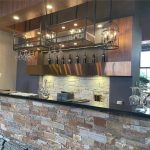Introduction
Bohemian cultured stone, with its rich history and unique aesthetic appeal, has been a popular choice for both interior and exterior design projects. This versatile material combines the elegance and charm of natural stone with the durability and affordability of manufactured stone. In this article, we will delve into the world of Bohemian cultured stone, exploring its origins, characteristics, applications, and the reasons behind its enduring popularity.
Origins of Bohemian Cultured Stone
Bohemian cultured stone has its roots in the Czech Republic, specifically in the region of Bohemia, renowned for its picturesque landscapes and historic architecture. The tradition of stone carving and masonry has been a prominent aspect of Bohemian culture for centuries, with skilled craftsmen using locally sourced natural stone to create intricate sculptures, buildings, and other architectural elements.
Over time, the demand for more affordable and lightweight alternatives to natural stone led to the development of cultured stone production techniques. By combining natural stone aggregates with cement, pigments, and other additives, manufacturers were able to create a versatile material that closely mimicked the appearance and texture of natural stone, while offering greater flexibility in terms of shape, size, and color.
https://www.fs-slate.com/step-stone/ of Bohemian Cultured Stone
Bohemian cultured stone exhibits a range of characteristics that make it a desirable choice for both residential and commercial applications. One of the key features of this material is its remarkable resemblance to natural stone, with rich textures, subtle variations in color, and authentic detailing that create a sense of timeless elegance.
In addition to its aesthetic appeal, Bohemian cultured stone is also prized for its durability and low maintenance requirements. Unlike natural stone, which can be prone to cracking, chipping, and weathering over time, cultured stone is engineered to be highly resistant to the elements, making it ideal for exterior cladding, landscaping, and other outdoor applications.
Furthermore, Bohemian cultured stone is available in a wide range of shapes, sizes, and colors, allowing designers and architects to create custom solutions that suit their specific project requirements. Whether used to accentuate a fireplace, create a striking feature wall, or add a touch of rustic charm to a garden pathway, cultured stone offers endless possibilities for creative expression.
Applications of Bohemian Cultured Stone
Bohemian cultured stone can be used in a variety of design applications, both indoors and outdoors, to enhance the visual appeal and functionality of a space. Some common applications of cultured stone include:
1. Exterior Cladding: Bohemian cultured stone is a popular choice for exterior cladding due to its durability and aesthetic versatility. Whether used to create a rustic facade for a country cottage or a modern accent wall for a contemporary home, cultured stone adds character and charm to any building exterior.
2. Interior Feature Walls: Cultured stone can be used to create stunning feature walls in interior spaces, such as living rooms, dining areas, and bedrooms. The textured surfaces and natural colors of cultured stone provide a striking backdrop for furniture, artwork, and other decorative elements, adding depth and visual interest to the room.
3. Fireplace Surrounds: One of the classic applications of Bohemian cultured stone is as a fireplace surround. Whether used to frame a traditional wood-burning fireplace or a sleek gas insert, cultured stone adds warmth and character to the hearth, creating a cozy focal point for the room.

4. Landscaping: Cultured stone is also widely used in landscaping projects to create retaining walls, garden borders, pathways, and other outdoor features. The weather-resistant properties of cultured stone make it an ideal choice for outdoor applications, where it can withstand the rigors of the elements while maintaining its aesthetic appeal.
5. Architectural Accents: From columns and archways to decorative moldings and cornices, Bohemian cultured stone can be used to create a wide range of architectural accents that add sophistication and elegance to any building design. The versatility of cultured stone allows designers to customize these elements to suit the overall aesthetic of the structure.
Reasons for the Popularity of Bohemian Cultured Stone
The enduring popularity of Bohemian cultured stone can be attributed to a combination of factors that make it a preferred choice for designers, architects, and homeowners alike. Some of the key reasons for the widespread appeal of cultured stone include:
1. Aesthetic Versatility: Bohemian cultured stone offers a wide range of colors, textures, and shapes, allowing for endless design possibilities. Whether seeking a rustic, earthy look or a sleek, modern aesthetic, cultured stone can be customized to meet the unique vision of the project.
2. Cost-Effectiveness: Compared to natural stone, Bohemian cultured stone is a more affordable option that provides the same visual impact without the high price tag. This makes cultured stone an attractive choice for budget-conscious projects that still require a touch of luxury.
3. Easy Installation: Cultured stone is lightweight and easy to install, making it a practical choice for both new construction and remodeling projects. The simplicity of installation reduces labor costs and time, making cultured stone an efficient solution for tight construction schedules.
4. Low Maintenance: Bohemian cultured stone requires minimal maintenance to keep its appearance looking fresh and vibrant. Unlike natural stone, which may require regular sealing and cleaning, cultured stone is designed to be durable and long-lasting with minimal upkeep.
5. Environmental Sustainability: Many manufacturers of cultured stone use eco-friendly production methods and materials, making it a sustainable choice for environmentally conscious consumers. By reducing the need for quarrying natural stone and minimizing waste, cultured stone helps to preserve the environment for future generations.
Conclusion
Bohemian cultured stone continues to be a popular choice for designers and homeowners seeking a versatile, durable, and aesthetically pleasing material for their projects. With its rich history, unique characteristics, and wide range of applications, cultured stone offers a timeless beauty that enhances any space, whether indoors or outdoors. As the demand for sustainable, cost-effective building materials grows, Bohemian cultured stone remains a top choice for those looking to create distinctive, elegant designs that stand the test of time.
